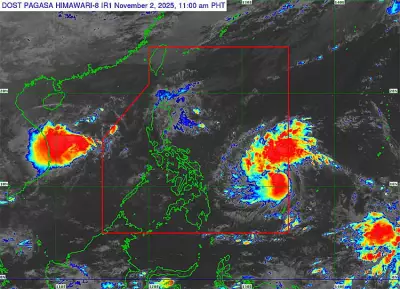
Typhoon Tino Leaves Trail of Destruction Across Cebu City
The powerful onslaught of Typhoon Tino on Tuesday, November 4, 2025, has left Cebu City grappling with massive destruction, exposing the dual vulnerability of both urban centers and upland agricultural communities. The catastrophic damage has sparked urgent conversations about disaster preparedness and urban planning in one of the Philippines' fastest-growing metropolitan areas.
Massive Scale of Devastation
As of 5 p.m. on Friday, November 7, 2025, the Cebu City Government reported that 9,193 families—equivalent to 34,668 individuals—across 80 barangays felt the typhoon's impact. The storm caused the Butuanon River to overflow, submerging communities like Sitio Lower Common in Barangay Bacayan and reducing homes to debris.
Initial damage assessments reveal staggering numbers: 6,000 houses were completely destroyed while another 2,812 sustained partial damage. The housing damage alone is estimated at a staggering P1.2 billion, highlighting the severe impact on residential areas.
The City Government has mobilized P25.32 million in relief resources, including food packs, water, and medicines for immediate distribution to affected families. The Department of Social Welfare and Services is conducting extensive validation to ensure aid reaches those most in need.
Agricultural Sector Suffers Heavy Blows
Beyond the urban damage, Typhoon Tino delivered a crippling blow to Cebu City's agricultural backbone. The storm caused P3.785 million in total agricultural losses, affecting 7,348 farmers and fisherfolk across 29 barangays.
The typhoon completely destroyed 1,404.615 hectares of crops, including rice, corn, and high-value vegetables essential to the city's food supply. An additional 380.203 hectares sustained damage, further threatening food security.
Upland farming communities in areas like Adlaon, Lusaran, and Babag saw their primary income sources wiped out. The destruction extended to agricultural infrastructure, including a screenhouse in Bonbon and an irrigation system in Malubog, which will significantly delay recovery of production.
Livestock losses added to the devastation, with hundreds of animals perishing—including 125 in Bonbon and 164 in Buot—further crippling the livelihood security of farming households.
Relief Operations Face Significant Challenges
Emergency response teams encountered substantial obstacles in reaching affected communities, particularly in remote upland areas. In mountain barangays like Cantipla and Sudlon 2, relief workers faced numerous landslides and fallen trees that blocked access routes.
The Department of Social Welfare and Services teams had to employ chainsaws to clear roads themselves, working late into the evening in severely affected areas like Sitio Biasong in Bonbon and portions of Toong, Sudlon 1, and Sudlon 2. These access challenges underscore the infrastructural vulnerability of mountain roads during severe weather events.
Path to Recovery and Rehabilitation
The immediate focus remains on relief operations, but attention is already turning to long-term recovery strategies. The scale of destruction—particularly the 6,000 totally damaged houses—will likely trigger discussions about permanent relocation, safer housing materials, and updated zoning regulations in flood- and landslide-prone areas.
For the agricultural sector, the City Agriculture Office is preparing a comprehensive damage report that will inform rehabilitation strategies. This may include distributing free seedlings and livestock, plus assistance for rebuilding damaged infrastructure to restore food production capacity.
Typhoon Tino has provided a costly lesson in preparing for the interconnected realities of a sprawling urban area, demanding a response that equally prioritizes the shelter needs of lowland residents and the economic survival of upland farming communities that play a vital role in Cebu City's food security.





